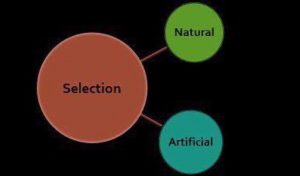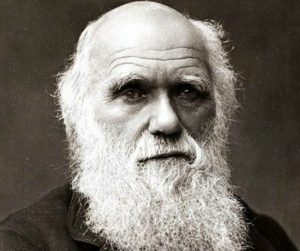Differences Between Natural and Artificial Selection: Evolution can occur through a variety of methods, including mutation, migration, and genetic drift, but natural selection is the most well-known and widely accepted. Artificial selection, on the other hand, entails artificial selection or selective breeding that is influenced by human activity. Natural selection selects the fittest organism, one that can cope with and adapt to a variety of conditions such as changes in weather, temperature, shelter, nourishment, genetic drift, and so on.

Artificial selection involves selecting organisms with desirable qualities and then genetically modifying them using the latest advances in biology technology. As a result, natural selection is what nature chooses at its best, and artificial selection is what humans chose based on their needs. Charles Darwin proposed the theory of evolution, which is known as ‘Darwinism’ or Natural Selection Theory. In this post, we will analyze the differences between natural and artificial selection, which will be useful in better understanding them.
Recommended: Differences between Civil Engineering and Architecture
What is Natural Selection?
Natural selection is the process of the universe’s fittest individuals surviving in a variety of settings. Natural selection was initially proposed in 1859 by Charles Darwin. Natural selection was introduced by him. This idea claims that evolution is caused by a natural mechanism that selects the best-suited traits without human involvement.

Natural selection is the process of a population’s survival, reproduction, and population growth favoring the fittest individual. Individuals that are unable to cope with the severe climate and other variances, on the other hand, are unable to develop, reproduce, or finish. Natural selection occurs in all of the universe’s animals, whether they are aquatic, terrestrial, or arboreal, for example.
Natural selection is a long-term process that takes hundreds of years to complete.

Every ancestor descendent has better-adapted conditions than the one before them. Early giraffes, for example, had a short necks. They couldn’t gather their food from the trees. They gradually grew lengthy necks over many years to boost their chances of survival. There are now long-necked giraffes in the globe who can readily eat from long trees. As a result, new species may emerge.
Recommended: Rarest Animals in the world 2022
Natural Selection’s Components;
1. A population’s organisms should differ from one another.
2. These variants should be heritable, that is, they should be able to pass on to future generations.
3. A large population growth rate is required.
4. Different reproduction and survival rates should be observed among the population’s organisms.
Also see: Highest Paying Programming Jobs 2022
Types of Natural Selection
1. Directional Selection: This is a sort of natural selection that picks any population’s extreme state.
2. Stabilizing Selection: This is a sort of natural selection that selects the population’s intermediate condition.
3. Disruptive Selection: This is a type of natural selection in which the population’s severe conditions are chosen.
What is Artificial Selection?
Artificial selection is a form of artificial technology for selecting organisms with specific characteristics. Selective breeding is another term for it. The term “artificial selection” refers to a process that is directed by people. It’s a quick process that could take a few years to complete.

Artificial selection results in the emergence of a new species or variant. Artificial selection is primarily employed for economic purposes. As a result, it only affects a small number of creatures, largely domestic ones. An organism that has been artificially selected has a low likelihood of surviving since the new breed may be endangered owing to differences in traits.
Artificial selection can be better stated with an example: if we require a cow with some unique characteristics, such as increased milk output and meat, we will cross-breed the various cows with the necessary characteristics. This cross-breeding will produce a new variety with distinct characteristics. This new breed has a slim chance of surviving, but if it does, it will produce superior outcomes.
Due to the growing demand for high-quality crops, fruits, and pets, such as cows, sheep, dogs, and buffalo, artificial selection is now frequently used. Every day, new variations emerge for the benefit of humanity.
Recommended: Best Science Courses to Study in the University
Comparison Between Natural and Artificial Selection
1. Meaning: Natural selection is the process by which an organism adapts to its changing environment by making selective changes to its genotype or genetic makeup.
Artificial selection, often known as selective breeding, is the process of humans identifying desirable qualities in animals and plants and using these traits to breed desirable phenotypic traits.
2. Process: Natural selection is a process that occurs in the natural world. Artificial selection, on the other hand, is a process that has been created artificially or by humans.
Recommended: Most Socialist Countries In The World 2022
3. Occur In: Natural selection occurs in natural populations and under natural circumstances. Humans create domesticated populations, where artificial selection takes place.
4. Rate: As a result of natural selection, a fit organism’s chances of survival improve. If not done appropriately, an organism’s chance of survival may be jeopardized.
Also see: Differences Between Passing Off and Trademark
5. Controlled by: Natural selection is a long-term process that takes many generations to accomplish. Artificial selection is a speedier procedure that takes days or weeks to complete and has more noticeable results.
6. Performed on: Natural selection is not as well-controlled as artificial selection since it is governed by natural processes. Because humans are in charge of artificial selection, it can be better managed.
7. Traits: Natural selection is based on an animal’s adaptive traits. Artificial selection is based on human-selected desired characteristics. Natural selection only passes on good or favorable qualities from generation to generation.
Only the selected qualities can be carried down via consecutive generations due to artificial selection.
Also see: Differences Between Active and Passive Learning
8. Diversity: Natural selection has an impact on a species’ entire population. Artificial selection only has an impact on the persons who are chosen.
9. Evolution: Natural selection is responsible for a great deal of biological variation. Artificial selection only results in desirable modifications and features, as well as a reduction in genetic variation.
10. Scale: Speciation and evolution over many generations are aided by natural selection. Evolution is not aided by artificial selection.
Recommended: Differences between Agent and Servant in Law
Key differences between Natural and Artificial Selection
1. Natural selection is the natural process of selection that favors the fittest for all time in the face of adversity; artificial selection is the artificial process of selection that favors the desired features in new creatures.
2. Natural selection is a long and laborious process; however, the selection of characters is done artificially, so the chances of surviving a new breed are reduced, whether it is a plant, an animal, or any other thing.
Also see: Types Of Citation Styles and Examples
3. Natural selection is under the authority of nature; artificial selection is solely under the control and coordination of humans.
4. Natural selection occurs in all types of animals, while artificial selection occurs in specific selective organisms that humans choose.
5. In natural selection, organisms are chosen based on their adaptability and ability to cope with a wide range of environmental situations. Artificial selection is carried out based on the needed character.
Also see: Differences Between Cost of Living and Standard of living
6. Natural selection transforms an entire population of a species, whereas artificial selection produces a new variety of that species.
7. Natural selection occurs in all types of natural populations and is a natural selection process; on the other hand, artificial selection occurs in domestic populations and is a man-made selection process.
8. Darwin finches, a collection of 14 kinds of little birds that originated from the same species of bird on the Galapagos Islands, are an example of natural selection. Artificial selection is commonly utilized in pet or domestic animals, as well as animals used for commercial purposes.
Recommended: Most beautiful animals in the world
Conclusion
We can conclude that change is a natural element of everyone’s life and that it eventually gives rise to new species, some of which are completely evolved versions of their ancestor species. As a result, we might say that artificial selection is planned, whereas natural selection is unplanned.

Edeh Samuel Chukwuemeka, ACMC, is a lawyer and a certified mediator/conciliator in Nigeria. He is also a developer with knowledge in various programming languages. Samuel is determined to leverage his skills in technology, SEO, and legal practice to revolutionize the legal profession worldwide by creating web and mobile applications that simplify legal research. Sam is also passionate about educating and providing valuable information to people.